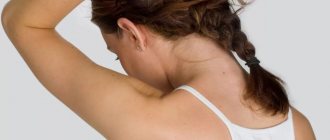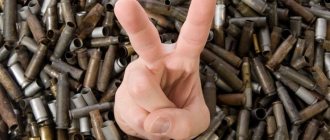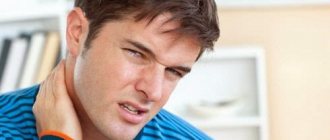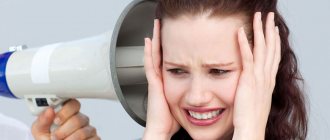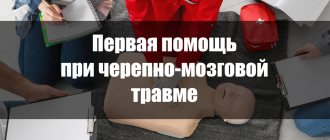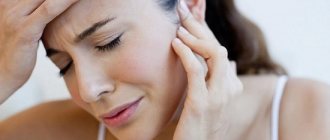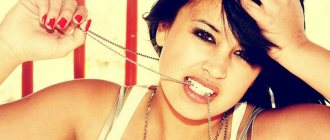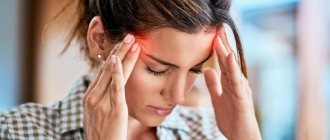Headache in one point when pressing. Cluster pain
A rare pathological condition that occurs predominantly in men and is characterized by painful headaches. The causes and mechanism of development of the disease are not fully understood. Patients note its sudden development; in rare cases, the attack begins with nasal congestion. The pain is localized in the parietal part of the head, radiating to the temple or eye area. There seems to be pressure on the skull from above, usually from one side. The sensations are sharp and burning, and can be boring. Accompanied by lacrimation, redness of the eyes, sweating of the face. Attacks last from 15 minutes to 1.5 hours and are repeated several times a day for 1-3 months.
You can learn more about cluster pain here.
A neurological disease of unknown etiology most often causes discomfort in women.
The headache appears from the top center and gradually covers one half of the skull. Symmetry of the symptom is rare. Sensations appear suddenly or after precursors - an aura. They are intense, similar to pulsation, radiate to the eye, temple or back of the head, and last from 2-3 hours to 3 days. Often the attack is accompanied by nausea and vomiting, which brings relief. The clinical picture intensifies under the influence of pungent odors, loud sounds, and bright light.
What types of “vital centers” are there?
Globally, all points can be divided into five main types. And they differ from each other in location and purpose. In total, about 700 are known, but the main ones with which modern specialists interact are no more than 200. The average person has access to a maximum of 10-15 main zones, knowledge of which will be the first aid in case of poor health and well-being. The purpose of “vital points” can be either stimulation or relaxation.
- Micro zones of the back.
They follow the entire length of the spine and are concentrated at the junction of nerve endings with muscle fibers. - Representation points
are a kind of “embassy” of an organ on the skin. For example, the “representation” of the pancreas is the supraclavicular zone on the left. Seals in this area and increased painful sensitivity indicate pancreatic disease. - Common points
are the most important, because their stimulation affects the entire central nervous system. And any manipulations with common active points require literacy and caution. - Local points
are hidden in muscles and blood vessels, which is why it is more difficult to work with them. The area of responsibility of local centers is individual systems of the body. That is, working with them, for example, immediately affects the cardiovascular or reproductive systems. - Segmental points
- through impact on them, there is an impact immediately on a certain part of the body. For example, acupressure of the neck will help you cope with problems of the upper extremities, quickly forget about headaches, help work out vascular diseases of the head and brain, and the impact on the lumbar region and tailbone will solve problems with the legs and reproductive organs.
Pressure pain in the back of the head. For hypotension
Low blood pressure is often not the cause of headaches, but can act as a catalyst for pathological processes that affect well-being.
Abnormal circulation caused by hypotension sometimes leads to excess blood in the vessels, arterioles and small arteries of the head. The vessels dilate and there is excess blood flow, which stretches them. During the stretching process, throbbing pain occurs.
When the back of the head hurts, increased intracranial pressure is diagnosed, causing discomfort. Hypotension is not often the root cause of pain in the back of the head or head. Even in a few clinical cases, pain from the back of the head is rarely observed; more often, hypotension leads to discomfort in the temples.
The onset of pain due to hypertension in a hypotensive patient is predominantly noted, when, with normal blood pressure for a healthy person (120–130/80 mm Hg), a hypotensive patient experiences pain and other symptoms of high blood pressure.
This type of pain occurs due to decreased tone of the veins located inside the skull.
Pain can be triggered or increased by:
- a prolonged state of leaning forward, especially when the head is below the level of the heart;
- increased physical stress on the neck and shoulder blade area;
- prolonged lying.
The purpose of the massage, its effects
Purpose of head massage
Head massage is most often done with one sole purpose - to get rid of painful sensations. Migraines are so exhausting and hit the nerves that the patient sees only one way out - to take a painkiller. However, there is no need to explain how harmful frequent use of anesthetic drugs is to the body. They negatively affect the functioning of all internal organs, especially affecting the functioning of the heart, liver and kidneys.
The use of acupressure head massage, if performed correctly, helps to get rid of a number of ailments:
- relaxes muscle tissue in the neck and head;
- gives a drainage effect, preventing blood and lymph from stagnating;
- improves metabolic processes in the body, having a beneficial effect on human immunity;
- increases performance and physical activity, reduces fatigue;
- helps fight insomnia, neurosis, and stress;
- The overall tone of the body increases, has a beneficial effect on memory, vision, and concentration.
Head massage is carried out to achieve not only a therapeutic, but also a relaxing effect. This requires an appropriate environment and knowledge of the basic techniques of this procedure.
When and to whom can it be done?
If migraine and aching muscle tension in the neck area do not leave you alone, then massage can be done at any time of the day. To achieve maximum results that will last a long time, it is necessary to create a favorable environment for the procedure. Many massage therapists and reflexologists know about this and take it into account when designing their offices.
To perform self-massage, it is best to find a quiet place where there will be no distractions - no extraneous sounds, no noise or voices of surrounding people. For a more relaxing effect, you can turn on pleasant music, but it should not be too loud. Some people use various elements to create a peaceful atmosphere: aromatic oils and candles, soft lighting, etc.
Headache in the forehead area. Diagnostics
Only a specialist can tell you exactly why your head hurts in the forehead area. Determining the cause is associated with an analysis of the nature of the pain and accompanying symptoms. Signs of a cold will be detected by a therapist or pediatrician by conducting a general examination and obtaining a blood test. This doctor will also suspect inflammation of various forms of sinusitis. However, only an otolaryngologist can make an accurate diagnosis based on an x-ray and blood test.
Most diseases that lead to pain in the head are diagnosed by a neurologist. To clarify the diagnosis, he prescribes the following studies:
- MRI. The resulting images make it possible to evaluate the structure of the brain, tissue density, the presence of tumors, necrosis, hematomas, the amount of cerebrospinal fluid, and the condition of blood vessels. Can be performed on young children and pregnant women. Children are performed under anesthesia.
- CT scan. As a result of the examination, a detailed picture is obtained that characterizes the presence of inflammation, tumors, and hemorrhages. Helps to see lesions of the sinuses, skull bones, and membranes of the brain.
- Angiography. It is a type of radiography with the introduction of a contrast agent.
- Ultrasound and Dopplerography of the brain and neck. Allows you to see organic lesions, identify disturbances in the shape, size of blood vessels, individual areas of the brain, and determine the speed of blood flow.
To confirm intracranial hypertension, consultation with an ophthalmologist is necessary. Also, in order to determine this diagnosis, a puncture of the cerebrospinal fluid is performed.
Cryodynamics
This method of influence is considered the simplest and, at the same time, the most effective way to awaken the hidden capabilities of the body. Ice applied to a feng fu point causes a strong flow of blood through the arteries supplying the brain, passing in this place. The work of the pituitary gland and hypothalamus, the medulla oblongata is activated.
With regular use of this stimulus, such a positive process as the restoration of lost body functions was achieved. As a result, a cause-and-effect relationship was identified: the feng fu point and the rejuvenation of the body. Reviews of observations of the process of transformation of the body under the influence of simple manipulations with ice cubes are unanimous. The impact is fantastic. As it turned out, feng fu is the only point on the human body that can cause such a reaction in the body.
Headache in the back of the head. Features and types of pain
Doctors identify several features of pain in the occipital region:
1. Primary, which is not related to diseases and appears in 90% of cases.
2. Secondary, which appears as a result of inflammation and occurs in 10% of cases. In approximately 4% of patients who complain of a headache in the back of the head, serious illnesses are found that can become a threat not only to their general condition, but also to life.
Pain in the back of the head can appear in different directions and most often it occurs on the left.
As a rule, discomfort is observed during head movements, and some patients think that the symptom appears not in the head, but in the cervical region, after prolonged work in a sitting position or severe fatigue.
There are several types of pain in the back of the head on the left side:
1. Acute. It begins as a result of emotional tension, stress and depression.
2. Stupid. Unpleasant sensations appear, the person cannot touch the head. A similar condition is typical for osteochondrosis and arthritis.
3. Aching. The back of the head hurts due to spasm in the shoulders or neck. Often occurs during severe mental stress.
4. Pulsating. Pain in the back of the head with high blood pressure and symptoms often appear in the morning. In addition, white spots appear in the eyes and tinnitus.
Regardless of its appearance, an occipital headache on the left causes a lot of discomfort; a person cannot concentrate and work normally.
If symptoms appear regularly, then a high-quality and complete diagnosis is necessary.
Head massage. Head massage during pregnancy
Very often, expectant mothers are bothered by headaches, but since the use of large amounts of medications during pregnancy is not recommended, the best method for relieving pain is to massage the entire collar area. It must be done by a professional massage therapist. Since it is he who will conduct it in order to reduce tension in the cervical spine and relieve pain along the nerve endings of the head and back.
But if you get a headache at night, you can do the following:
- head massage must be performed with circular movements of the fingers;
- you can use a compress with warm water for 20 minutes and then use a hand massager to make several circular movements clockwise;
- Washing your hair with massage movements and chamomile tincture will help you (if it’s hard for you to do this yourself, ask your husband, sister, mother).
Painful point on the head. Primary point pain
One of the types of point cephalgia is primary head pain, the symptoms of which in most cases are typical and rarely appear in another form:
- acute pain manifests itself in the form of single or serial impulses, similar to an injection;
- the duration of spontaneously occurring attacks does not exceed a few seconds, while the time interval between them varies from several times a day to a month;
- the location of outbreaks of pain is the area of the temples, crown, frontal lobes and orbits;
- attacks of primary pain are not aggravated by symptoms that appear in other types of cephalalgia.
The causes of primary point pain must be considered individually.
Such pain in most cases is not associated with serious diseases, but can occur under the influence of external factors - unfavorable weather conditions, drinking cold drinks, fatigue or stress on the organs of hearing and vision. People suffering from histamine cephalalgia or migraine are also susceptible to point primary headaches. In this case, sharp impulses appear in the area of localization of migraine and cluster pain. Primary pain, which occurs rarely and in isolated cases, does not require drug treatment, since it does not inhibit the functioning of the body as a whole and does not reduce the quality of life. If a headache occurs in one point more often than usual, the patient, in consultation with the doctor, can take the following medications:
Is something bothering you? Illness or life situation?
Describe your problem to us, or share your life experience in treating the disease, or ask for advice! Tell us about yourself right here on the site. Your problem will not go unnoticed, and your experience will help someone!
- Painkillers. In most cases, this is Indomethacin, the positive effect of which is experienced by up to 65% of patients susceptible to primary point pain. To protect the gastric mucosa, gastroprotective drugs must be taken along with Indomethacin.
- Anti-inflammatory drugs whose actions are similar to Ibuprofen.
- Neurohormonal agent Melatonin, which normalizes brain activity, activates mental processes, memory, and thinking. Melatonin is prescribed by a doctor if Indomethacin is ineffective, taking into account multiple contraindications (for example, pregnancy) and side effects (emotional swings, weakness, nausea, dizziness, drowsiness).
Myofascial pain
More than half of neck pain and headaches are caused by changes in the spine. Areas of irritability, the occurrence of which is caused by any changes in the spine, are often found in patients with various diseases, characterized by constant pain in the back and lower back to tension headaches.
In order to correctly determine how common these pains are among the population, it is necessary to correctly classify the points at which pain occurs. There are places where pain appears when pressure is applied - these will be active trigger points. There are areas of the body that do not directly cause pain, but in which increased muscle tone or shortening can be observed - these are latent trigger points. Unfortunately, at the moment, it is not clear to what extent myofascial pain is related to joint diseases. Some scientists believe that muscular-tonic pain is often present in various systemic diseases of the joints, only in this case, research is not carried out to determine the true causes of pain. The term myofascial pain syndrome in the modern world refers to all locally manifested pain that comes from muscles and tendons, only in this case the pain seems to radiate to a specific muscle, that is, it is not the muscle or ligament itself that hurts. The term "myofascial" means that the pain comes from a specific muscle. One of the methods for diagnosing such pain is to feel with your hands the areas of muscle nodes, that is, places where the muscle is especially dense. These areas are also called trigger points.
A myofascial trigger point is an area of muscle tissue with increased sensitivity and soreness, pain from pressure on which is reflected. Typically, a patient with a pain point often has some discomfort in this area even at rest. With the help of simple finger pressure, you can accurately determine in which area of the muscle tissue there is a violation. Scientists believe that pain points are most often found in the muscles that give the human body a certain position.
Scientists distinguish two types of myofascial pain syndrome (hereinafter referred to as MPS). The first type is primary pain syndrome, in which the patient’s main complaint is pain in a certain muscle point, but there is no other disease of the spine or muscle that causes it. There is a secondary pain syndrome, which is more common compared to the first type. The occurrence of this type of MBS is associated with the presence of any disease of the spine, skeleton or joints that is chronic or systemic in nature.
A feature of trigger points in MPS is that the patient experiences pain only in a certain area, there is no referred pain.
Sometimes doctors diagnose myafascial pain syndrome if the patient does not have other diseases that can cause these discomforts.
There is no specific category of the population that is most often susceptible to MBS. This syndrome can be diagnosed by a doctor in almost any person, regardless of gender and age, who has pain in the muscles. And yet, iofascial pain syndrome most often occurs in people 30-45 years old. People who have any disorders of the spine and posture (spinal curvature, stoop) have the highest risk of developing MBS.
Causes of pain
Currently, numerous studies are being conducted to identify the true causes of trigger pain. But so far scientists have not come to a general unambiguous conclusion. The research results helped determine that trigger zones are areas of muscle tissue that have increased activity throughout the area with low voltage. The occurrence of such lesions in soft tissues is currently associated with metabolic disorders in this area or with trauma. Currently, the common main reasons that provoke the occurrence of MBS are considered to be weakening of the body due to past diseases, poor posture, and lack of vitamins, including vitamin groups. B, lack of sleep, constant impact on any part of the body in the form of compression.
Is it possible to cure the disease?
In mild cases, MBS is cured after eliminating the factors that caused it and applying appropriate therapy. If MBS does not respond to treatment, or is treated incorrectly, then in the future this can lead to constant pain, which will be very difficult to cure in the future. In especially severe cases, the pain ceases to be local and spreads to nearby tissues.
Symptoms of myofascial pain syndrome
The source of myofascial pain can be only one area of muscle tissue, sometimes there are several. But more often, at the beginning of the disease, only one trigger point is present, and later, due to increasing muscle imbalance and impaired mobility, accompanying points of discomfort may form. If MPS is not adequately treated, then neuroplastic changes may increase in the trigger points and the area of the pain point may expand, that is, accompanying tissues will be involved in the process and, ultimately, the pain may intensify (this phenomenon is called central sensitization). With the further development of the disease, the pain can sometimes acquire a mirror character, that is, the same part of the body will hurt, but on the other side.
Pain syndrome in the lower back
The causes of pain in this area are varied. Sometimes pain syndrome occurs as a result of serious diseases, for example, metastases of a cancerous tumor can give similar symptoms, including malignant pancreatic tumors, herniated intervertebral discs, and mechanical damage to spinal segments. Often the cause of severe back and lower back pain is lumbago. This disease is usually successfully treated within several months. If there is no cure, the disease becomes chronic, and pain points may form in the future. Sometimes such pain can “radiate” to the lower back, groin area, sacrum or outer thigh, depending on which muscle group the source of pain is localized in.
Pain syndrome in the back of the head and upper torso
Hidden trigger points, that is, those in which there is no pronounced pain syndrome, but only some changes in the muscles, are most often found in the back of the neck and shoulders. Trigger points, with a pronounced pain syndrome when pressed, are most often found in the muscle responsible for the movement of the scapula. Sometimes the pain is reflected and “radiates” to the jaw or back of the head. If a person actively uses the trapezius muscle, which is responsible for lifting the scapula, severe pain in the shoulder may occur. The development of this type of MBS most often occurs in office workers engaged in sedentary and sedentary activities with poor posture. Due to the fact that when lifting the scapula and fixing it in one position, other muscle groups are also involved, trigger points are often present in these areas of soft tissue.
Pain syndrome in the upper leg area
It occurs due to various disorders in the hip joint. Most often it manifests itself as pain in the groin or outer thigh. Such pain is rarely associated with MBS and most often occurs due to inflammation of the joint capsules; sometimes it is directly related to the appearance of myofascial points in nearby muscles. Sometimes MBS itself occurs in thigh muscle groups.
Pain syndrome in the pelvic area
Trigger points often form in the muscle tissue of the pelvic area. Many gynecologists and urologists believe that their occurrence is associated with certain diseases of the genital area in men and women. Pain in the pelvic floor muscle, for example, can radiate to the lower part of the buttock.
Headache
Sometimes migraines occur due to the presence of pain points in the muscles of the neck, back of the head, shoulder or face. Myofascial points in these soft tissue areas can trigger and cause tension headaches and other headaches. Pain syndrome associated with the presence of trigger points in the temporal region can be localized in the facial area. The presence of painful areas in the muscle responsible for moving the scapula may be associated with pain in the upper face or temples. Pain points in the soft tissues of the neck can manifest as unpleasant sensations in the back of the head.
Pain syndrome in the jaw area
Pain syndrome in the jaw area is associated with changes in the joints of the jaw, which result in pain points in this part of the face. Most often these points occur in the pterygoid bone.
Pain in the shoulders and arms
The pain areas located in the muscles located in the area of the scapula are responsible for the occurrence of pain in this part of the body and in the limbs. Often, the presence of trigger points in the muscles of the shoulder blade causes pain in the hand and arm. These pressure points are caused by excessive flexion or hunching of the neck. With such localization of compaction points, pain in the elbow or little finger often occurs.
Painful sensations in the legs
The presence of pain points in the hip area can provoke the development of discomfort in the knee or hip, mainly on the side. In some cases, depending on the location of the trigger points, pain may occur in the front or back of the knee. Back knee pain can be caused by changes in the hamstring. Also, the presence of trigger points can provoke pain in the ankle or any other part of the lower limb. Sometimes the occurrence of discomfort in the leg is associated with various injuries.
Pain in the chest and abdomen
Typically, the diagnosis and treatment of diseases that cause chest or abdominal pain are carried out by a general practitioner at a hospital or clinic, depending on the patient’s underlying illness. Sometimes the patient's pain in the anterior chest is associated with the development of myocardial infarction and other heart diseases and the person is hospitalized urgently. Often suspicions of a heart attack turn out to be erroneous. Often, chest pain is associated with the presence and formation of trigger pain areas in the muscles of this part of the body. Pain points in some chest muscles can often radiate to the arm, and sometimes contribute to the development of attacks of coronary heart disease. MBS in other muscles in this area is often the cause of pain behind the sternum and in the iliac region. Nodular disorders in the soft tissues of the abdomen can be mistaken for symptoms of pain due to impaired gallbladder function or infectious diseases. It is important to remember that the presence of trigger points can also be directly related to diseases of the gastrointestinal tract and chest organs. When diagnosing MBS itself, due only to the presence of trigger points, it is necessary to exclude the possibility of other diseases in this area.
Establishing diagnosis
The diagnosis of MBS is subjective and often depends on the doctor who diagnoses and treats the patient. It should be remembered that myofascial pain is often a companion to other, more serious diseases, so the specialist treating the patient needs to conduct a thorough examination to identify the true causes of the pain. Trigger pain is subjectively felt by the patient as mild, arising only as a result of movement of the affected muscle, and intensifying with nervous tension. A specific feature of this pain is the presence of a clear focus, the source of which is a tightness in the muscle tissue (trigger point). The pain that appears when pressing on the trigger area, in some cases, may be the same as that experienced by the patient when the affected muscle is directly worked. Manual palpation of the affected area often reveals a dense nodule of muscle tissue. In some cases, piercing this point with a thin sharp object causes a sharp, spasmodic contraction of the “sick” muscle. But such a reaction usually appears only in the muscles located close to the skin. The cause of MBS is sometimes mechanical damage to the muscle or constant physical stress on it. Diagnosis of MBS is often expensive and is carried out in medical institutions equipped with modern equipment. In some patients, a serious concomitant disease is found, which may be the cause of pain, and the diagnosis of MBS is no longer made, although trigger areas are present. MBS has characteristic signs that help make the correct diagnosis. The pain is deep and often accompanied by other unpleasant sensations, such as a feeling of stiffness in a muscle or joint. Painful sensations intensify with hypothermia of the affected tissue, strong mental stress and overstrain of the sore muscle. In some cases, the nature of the pain resembles the sensations of radiculitis. Consequences of MBS: muscle weakness, rapid fatigue, poor sleep of the patient. Pain in the head resulting from MBS can provoke attacks of dizziness and poor posture.
Features characteristic of the trigger zone:
- The location of pain when pressing on the muscle.
- Pain when pressing on the myofascial point itself.
- Tightening of a nearby muscle.
- Restricted mobility of the affected muscle.
- Weakness of muscle tissue, in the absence of atrophic changes in its structure.
- Referred pain when palpating the painful area.
Therapy methods
Restoring correct body position during physical activity.
To cure trigger pain, it is often enough to monitor correct posture and conveniently organize your workplace to avoid overstraining certain muscle groups. Sometimes this is enough, the pain goes away.
Physiotherapy
In the patient, the affected muscle is usually in a state of constant tension and does not relax for a long time. Exercise therapy helps relax overly contracted muscles and stretch them. In order to stretch the contracted muscle, special preparations are used, and then it is simply passively stretched. Exercise therapy also helps strengthen the sore muscle, preventing its secondary weakening due to prolonged pain. But physical stress on the affected muscle should not be excessive so that trigger points do not form in nearby muscles.
Inactivation of myofascial areas.
This treatment method is the most effective. Correctly performed blockade of these areas is the key to successful treatment. Properly carried out therapy leads to a positive result in the form of relaxation of the tight muscle. The trigger area disappears. The affected area is blocked by piercing it with a needle. Needling can be dry or with the use of locally applied painkillers such as lidocaine, the latter of which is more effective and leads to a quick effect. The compaction area instantly disappears. Corticosteroid therapy has not proven itself and is practically not used at present. The possibility of using botulinum toxin for muscle relaxation is currently not well studied and is under research.
Specific treatment with drugs.
Scientists have not yet found effective drugs that lead to the disappearance of MBS. To relieve pain, non-hormonal anti-inflammatory drugs and painkillers, such as analgin at home and other analgesic drugs, are used. To improve the process of falling asleep and staying asleep in patients with MBS, antidepressant medications and drugs that reduce muscle contractions are used.
Help from a psychologist for patients with MBS.
Patients suffering from severe forms of myofascial pain syndrome often need qualified psychological help due to a deterioration in their mental state, the appearance of irritability and anxiety.
In some cases, MBS can be cured with the help of psychological therapy, which helps to relax and improve the patient's mental state. Author: K.M.N., Academician of the Russian Academy of Medical Sciences M.A. Bobyr
My forehead hurts when I touch it. What to do if your forehead hurts and your temperature rises?
The most likely cause of pain in the forehead in combination with an increase in body temperature is an acute respiratory viral infection (influenza, parainfluenza). In addition, this symptomatology can also precede inflammation of the frontal paranasal sinuses (frontal sinusitis). It is worth noting, however, that in addition to the above reasons, these symptoms can also occur with many other pathologies. Treatment for each of these pathologies may differ significantly, and that is why it is important to consult a doctor in a timely manner to correctly diagnose the disease. In order to relieve pain, nonsteroidal anti-inflammatory drugs (NSAIDs), which have a moderate analgesic effect, are usually used. To reduce the severity of headaches, the following medications are most often used:
- paracetamol;
- aspirin;
- diclofenac;
- ibuprofen;
- naproxen.
Also, these medications can lower body temperature to a certain extent (eliminate fever and chills). This is achieved due to the fact that these medications are able to influence the thermoregulation center and increase the normal body temperature to a higher point. It is worth noting that children can be given only two drugs to reduce body temperature - paracetamol and ibuprofen. Unlike other representatives of this drug group (NSAIDs), these two drugs have virtually no side effects and are therefore relatively safe.
Acupressure techniques
During acupressure, only one obligatory tool is used - fingers.
But the ways to use them are varied. It all depends on the goal you are pursuing and the expected effect: 1. Pressure.
Performed with the thumb or index finger.
During this technique, rotational movements are performed. Its essence comes down to gradually increasing the force of pressure. Sometimes the impact occurs with two fingers at once (if the centers are symmetrical). The massage begins with light touches and slow rotations, then the pressure increases until you, or the person you are giving the massage to, feels the pressure. After this, the finger pressure is released. 2. Toning acupressure
involves an intense, but not long-lasting impact on the area. At the same time, it is important to deeply and quickly rub the area, still maintaining a short-term pace of impact.
This should be repeated several times. Sometimes, without lifting the finger from the body, vibration is carried out, that is, rapid rotations up and down, left and right. Toning the centers is especially useful in the morning; it will provide a surge of vigor, relieve drowsiness and nourish vitality. 3. Stitching massage
.
Sharp and quick “injections” are made with the index finger at the location of the center. Maximum hit accuracy is important here. 4. Pinch technique: fold your fingers as if trying to take a pinch of something. With this “pinch” they grab the skin where the energetically active zone is located and knead it in every possible way, squeeze and rotate it until the place of grab is numb. 5. Stroking.
Most often suitable for working on the face and head.
Stroking involves an average pace of finger rotation, without pressure. 6. Vibration.
The finger should be pressed tightly to the skin and oscillate continuously.
Vibration and associated movements occur quickly. This technique will help you either relax or cheer up. 7. Soothing massage.
The essence is deep, slow and continuous pressure on the zone.
All movements are performed uniformly, rotationally. The main thing is not to displace the skin. The pressure force must constantly increase. We pause periodically and start the vibration again. 8. Brake option.
It is used in children's massage, for problems with blood circulation, and also to relieve muscle tone.
The point of these manipulations is to slow down excitement, relieve any tension, and start the body’s recovery. Press on this place for no more than 1.5 minutes. 9. Rubbing
. Pass the fingertip clockwise in the massage areas. Basically, rubbing is carried out as the final stage of the session, after other manipulations.
Rules for acupressure:
- Be sure you are working on the right areas so you don't cause any damage.
- The key to successful treatment is attitude and faith in the effect of treatment.
- You should relax as much as possible so that you are comfortable and comfortable.
- The air temperature in the room where you are planning a massage should be comfortable.
- It is advisable to concentrate as much as possible on the process at the moment of pinpoint stimulation.
- Finger movements during acupressure should not be rough or cause unbearable pain.
- It is also important to prepare your fingers: wash, wipe and rub so that they become warm.
- It is permissible to use special oils and balms. For acupuncture massage, needles must be disposable and sterile.
- When visiting a specialist, also make sure of his qualifications (reviews, recommendations, supporting documents, diplomas)
Contraindications for massage:
- heat
- any disease in the acute stage
- malignant tumors of any location
- elderly age
- pregnancy
- exhaustion
- anorexia acute mental conditions
Painful point on the left rib. Pain in the ribs
Rib pain usually refers to discomfort that occurs in the chest wall, rather than inside it. In this case, the source of discomfort is bone or cartilage tissue, adjacent muscles or nerves. Pain in the ribs can be of a different nature: it can be constant or intermittent, sudden or increasing, acute or dull. Doctors explain this diversity by a large number of underlying causes.
Pain in ribs when pressed
Sometimes an inflammatory process can occur in the cartilages that are attached to the sternum - Tietze syndrome. Pain in the ribs when pressed in this case can be quite intense and resemble symptoms of angina pectoris. In addition, attacks can occur spontaneously, without external influence. The localization of pain can be very diverse.
Tietze's disease is accompanied by additional symptoms:
- swelling in the area of the inflamed costal cartilage;
- when pressing or squeezing the sternum, the discomfort becomes stronger;
- the first attack may develop against the background of trauma.
In any case, if discomfort in the rib area bothers you for more than three days, you should definitely seek help from a doctor. But before you go to your appointment, you can undergo a self-diagnosis on our website. It contains a simple test, by answering the questions of which you can get a preliminary diagnosis and understand which specialist you need to make an appointment with.
Main directions
Experienced massage therapists have different types of procedures in their arsenal to alleviate the condition of their patients. They differ in techniques and are used depending on the severity of the patient’s condition and the achievement of a specific effect. The main areas of head massage include:
- Acupressure to relieve acute pain, or acupuncture. The essence of the method is to influence certain points, which smoothes out and then completely relieves pain.
- General massage. The purpose of this procedure is to improve lymph and blood circulation in the body and relax muscles.
- Massage in the cervical and occipital areas to eliminate pain.
- Impact on trigger points - areas with the greatest muscle tension. Thanks to massage, these lumps, which cause referred pain, disappear over time.
Let us note that anyone can master the basic principles of head massage if they have the desire and patience. Such skills allow you to apply knowledge into practice at any time and relieve headaches for yourself or your relatives. However, if we are talking about chronic diseases that have an advanced form, then it is best to entrust all of the above areas of massage to a professional.
Painful point on the foot. 21 points on the feet, massage of which improves well-being
- On our feet there are projection zones of many internal organs, by acting on which we can improve our well-being.
- It is recommended to massage the feet as a whole, rather than individual points. First, your feet need to be stretched and warmed up: walk barefoot, rise on your toes several times, take a warm foot bath.
- Rub the entire foot with stroking movements, then begin to press on each active point (3-7 seconds), moving from the toes to the heel. Also use techniques such as pulling (when massaging your fingers), tapping (with the edge of your palm), pinching, and kneading.
- In the process, you may discover pain points. This means that the organs for which they are responsible are not in order. These points need to be massaged with special care.
- The technique of influencing painful areas is pressure (with the thumb), which must be alternated with pauses, and the whole process should take at least a minute. The result of a properly performed massage is the disappearance of pain.
- The following contraindications exist for foot massage: high temperature, impaired blood clotting, exacerbation of chronic diseases, deep scratches or injuries on the surface of the feet.
Bright Side will show you the most important points and tell you how to massage them to always feel 100%.
What is acupuncture and acupressure
Massages, acupuncture or reflexology (often popularly called acupuncture) are a very ancient phenomenon. It consists in stimulating certain centers and channels on the surface of the skin through which vital energy moves and are connected with the internal organs. Such stimulation has a beneficial effect, relieves ailments, energizes and gives strength. According to the conclusions and findings of scientists, this knowledge is thousands of years old and the birthplace of acupressure is considered to be ancient Tibet, Nepal and India, where by those standards science and medicine were developed. Modern scientists have indeed confirmed in the course of research the presence of certain zones on the human skin - biologically active points with distinctive features:
- have electrical resistance and emit more energy
- the surface of the skin where these places of “power” are located has a slightly higher temperature than normal areas
- have a high pain threshold and increased sensitivity
- feed more actively on oxygen and trigger metabolic processes
- The mission of any massage, acupuncture or acupuncture is to activate these biological zones on the body through massage to improve the health of the body and get rid of the causes of some problems in the body.
Painful point on the abdomen. Pain points in the head and neck area
- pain points of exit of the I, II, III branches of the trigeminal nerve - with neuralgia of this nerve, sinusitis, meningism and meningitis, arachnoiditis (absent in comas);
- Greenstein's vascular pain points: at the inner corner of the orbit - with phlebitis and thrombophlebitis of the facial veins; behind the ears in the area of the tubercles of the occipital bone - with vasomotor pathologies of cerebral vessels, meningitis;
- pain points in the temple area above the zygomatic process - with arteritis and sympathalgia of the face, leptomeningitis;
- pain points in the area of the mastoid process, in front and downward from the tragus of the ear - with neuritis and neuralgia of the facial nerve, otitis, mastoiditis;
- pain points at the base of the skull above the first cervical vertebra at the exit point of the occipital nerves - with neuralgia of these nerves, cervical osteochondrosis, meningitis, tumors of the cerebellopontine zone;
- pain points of the spinous processes of the cervical vertebrae, intervertebral discs, paravertebral - for osteochondrosis, herniated intervertebral discs;
- pain points of the vertebral artery on the line connecting the apexes of the mastoid process and the spinous process of the second cervical vertebra - with pathology of the vertebral artery and cardialgia of various origins.
Rejuvenation point
Feng fu turned out to be a key point for influencing the body in order to awaken fading vital functions.
It was with the systematic use of low temperature at this point that a positive change in the functioning of many internal organs was revealed. In addition, many external signs appear that indicate the body’s recovery processes.
Disorders that Feng Fu Can Correct
The main thing with this method is the systematic implementation of the procedure. Diseases do not come to us overnight. They, like a snowball, grow in our body over the years due to constant exposure to unfavorable circumstances. To correct such malfunctions in the body’s functioning, it takes more than just time. You need to believe in a successful outcome. Otherwise, a week or two will pass, and the method will be put aside as ineffective and completely discredited.
This procedure will help the body get rid of completely or partially such dysfunctions as:
- sleep disorders;
- fatigue and general weakness;
- vegetative-vascular dystonia;
- hypertension, hypotension;
- malfunctions of the reproductive system (frigidity and impotence);
- menopause;
- stress and neuroses;
- neuralgia;
- cardiovascular diseases;
- arthritis;
- acute respiratory infections, acute respiratory viral infections, bronchitis and asthma.
Among other things, the functioning of the digestive system will also be normalized. The skin will noticeably rejuvenate, especially in the facial area. Small wrinkles and swelling will go away. Such results are available only to the most consistent and loyal supporters of feng fu. The point, reviews, photos and stories about which are passed on in large numbers from person to person today, has helped many change and improve their lives.

